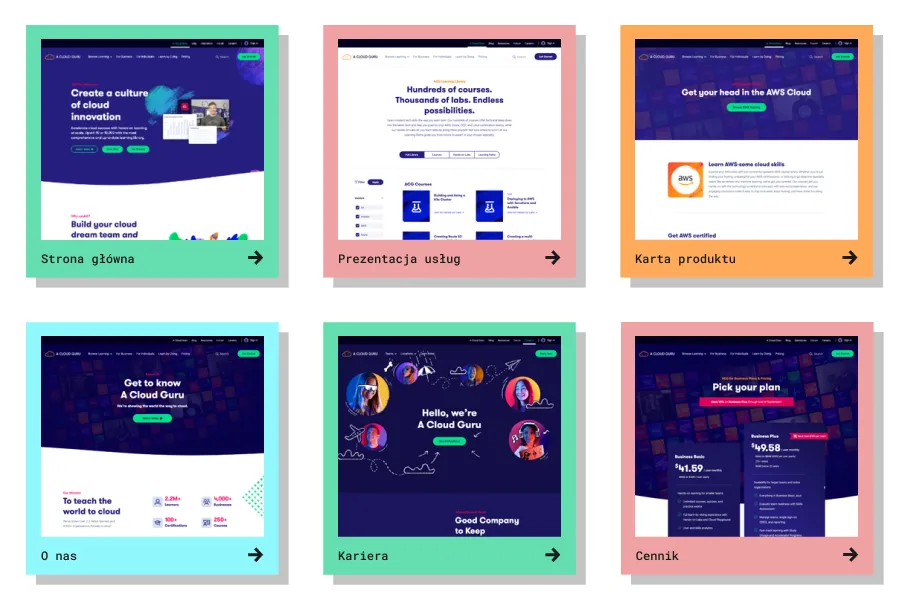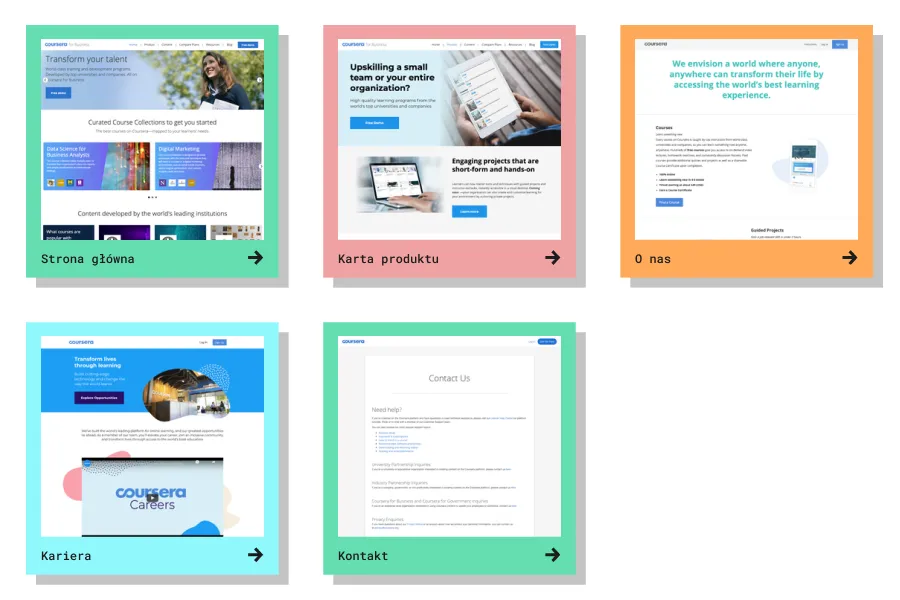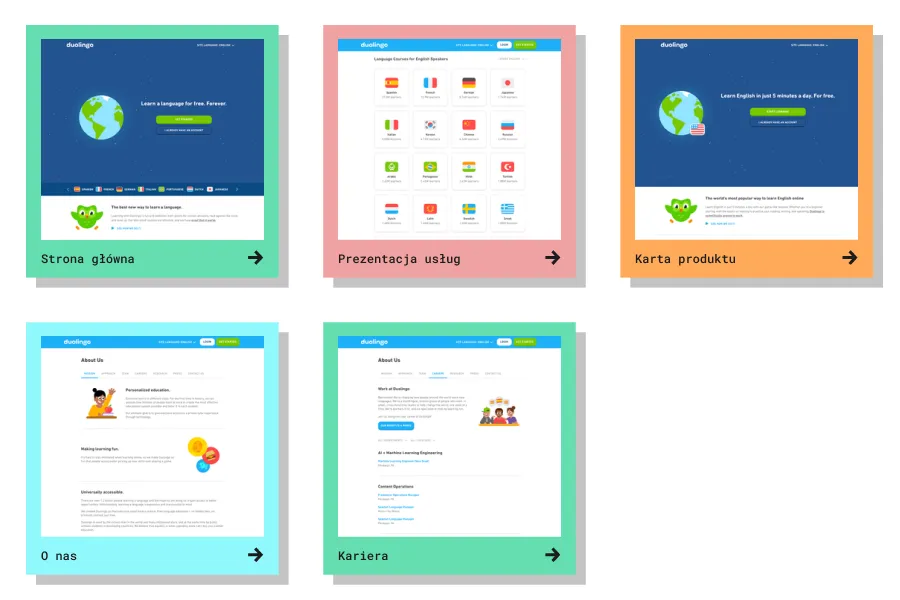The day before yesterday, I completed a course on an e-learning platform. Yesterday I signed up for a webinar. And tonight I have an English class with Sandra, who lives in San Francisco. Sounds familiar? Welcome to the world of continuous learning! This is the world of EdTech in the time of the pandemic.
How do you learn new things? By reading, listening, or watching? Or maybe all of the above? Do you prefer to click or to touch? Which platform functionalities are incomprehensible to you? What annoys you about the platform?
These are the kinds of questions sometimes asked by pupils, students, and course participants. They ask the questions but do not have to be fully aware that the answers to them lead them to change the e-learning solution.
But these questions must be asked (and answered in the best possible way) by the companies that offer digital products supporting education. Naturally, the above list is far from complete. This is just an example, a small excerpt from our research. However, it announces the content of this article. Today, we will talk about the research conducted by us in the EdTech industry and the UX Audit service we offer based on it.
After reading this article, you will know about our research conducted by R&D (Research and Development) experts. You will also learn about our EdTech UX Audit service. Research and Audit, first of all, enable you to understand the user needs, expectations, habits, and emotions. Secondly, they allow you to prepare a web application or an e-learning platform (any educational tool) to compete successfully.
However, above all, they enable you to increase the Conversion Rate. In other words, if you want to attract more B2B customers and more leads, we can effectively help you with it.
EdTech, UX and coronavirus
Source: CNBC Make IT
The problem is pressing (the EdTech market leaders record million increases in the number of users; in fact, the entire EdTech industry is in a bull market), fresh, and rapidly growing.
It started at the beginning of 2020, and its end cannot really be determined. This concerns competing, gaining market share, strengthening the position, developing competitive strategy, and using tools to increase the chances of competing. Simply put, this is about addressing the needs of individual and business (B2B EdTech) customers.
The key to winning new users and companies in EdTech will be ensuring their positive User Experience (UX). And this task requires knowledge, experience, scientific reliability, and proven methods, i.e., everything we used during the EdTech industry research.
EdTech, or the revolution in education
Education supported by digital solutions and technologies entered our lives a few years ago. Most of us have been using, are using, or will be using some form or method of Distance Learning. And all this is due to the rapidly increasing popularity of the solutions, methods, and technologies collectively referred to as EdTech.
Can we talk about a revolution in education? Indeed, something is going on. It is not without reason that it is said that “EdTech is the next FinTech.” Considering the market value, investment volume, and the number of emerging platforms and e-learning tools every year, it is difficult not to get such an impression.

EdTech (the term EduTech is used interchangeably) is the merger of two words: ‘education’ and ‘technology.’ It refers to modern learning forms, methods, techniques, and tools. Mostly offered through the Internet and in almost 100 percent of digital nature.
What is it all about? It’s simple. Each year and month, we will have more and more e-learning platforms, e-schools, e-studies, e-courses, e-trainings, e-consulting, edu-series, edu-tools, etc., to choose from.
And all this to acquire information, knowledge, skills, and confirmation of their acquisition in the form of certificates, diplomas, and even Nano Degrees. The purpose is not only self-development but also gaining a competitive edge in the labor market and a better position in the social structure.
Efficiency and usability are particularly important issues for EdTech. Similar to other popular solutions where technology has a utilitarian function to the basic human needs. Extended to include the needs resulting from social roles (e.g., employee, employer, customer, or service provider).

CleanTech, FinTech, LegalTech, HealthTech, MarTech, EdTech: energy, finances, law, health, marketing, and education. These are just a few most spectacular examples of using technology to:
- Improve and expand the availability
- Accelerate and automate processes
- Strengthen user motivation and deepen user engagement
- Increase the sense of security and predictability
- Minimize the risk in decision-making situations and increase the sense of responsibility.
To put it more simply, EdTech includes all digital products that help you to learn, accelerate knowledge and skill acquisition, reinforce your engagement and improve your personal and professional functioning.
The products are created based on research, analyses, and continuous process of development. They are similar to and imitate learning and competence expansion processes in this respect. And they are used to expand the capabilities of both individuals and groups (e.g., professional groups).
EdTech, or educational technology, is used:
- In schools (private and public at all levels)
- In universities and research facilities, and institutes
- In the homes, offices, and public administration offices
- For personal purposes and hobbies (e.g., edutainment) and strictly business and professional purposes
- Individually and in groups
- In a formal and informal way
- Stationary and online
- For commercial and non-profit purposes.
EdTech is used by:
- Pupils and students
- Teachers and scientists
- Adults and children
- Employees and employers
- Educators, speakers, mentors, coaches, therapists, science and knowledge popularizers, instructors, human resources specialists, and lecturers.
The EdTech concept includes not only modern information and communication technologies but also infrastructure, peripherals (e.g., video and slide projectors), software, content (text, audio, audiovisuals, photos, graphics, animated models, instructions, handbooks, and Augmented Reality) and teaching methods (indicating goals, expectations, ways of presenting knowledge and information as well as the ways to evaluate learning progress).
You can also view EdTech as a process (e.g., of teaching theory development or improvement of teaching tools). It is also the process of knowledge transfer, the means of its transmission, and the development of new methods for motivation to learn. This concept also includes learning management systems and education and educational facilities management systems (logistics, budgeting, and data storage).
EdTech in the age of coronavirus: opportunities and UX challenges
The pandemic that drives the boom in the EdTech industry (as in a few others!) is undoubtedly a powerful incentive to strengthen and improve market position. It provides an opportunity for companies already present in the market, startups making their debuts, and businesses being hastily created to ride the rising tide.
For many companies, it will be quite a challenge. The educational tool’s attractiveness will be measured not only with the indicators of learning progress but also with experience, emotions, sensations, and frustration resulting from and arising during use.
The multitude of solutions and extensive functional offer related to learning objectives and methods certainly do not favor user loyalty. The users will ‘punish’ the applications and platforms that are undeveloped as regards UX (e.g., newly established startups) by abandoning them.
So, do not disregard the issues related to User Experience. Indeed, and we recommend it with full conviction, it is worth making designing and optimizing educational tools and products for UX best practices a priority. Today, attention to positive UX is a:
- Necessity
- Standard
- The best method for gaining an advantage
- Way to win user liking and loyalty
- Opportunity to receive positive and the most valuable recommendations (word of mouth).
How to design digital learning products to increase conversion?
UX plays a vital role in EdTech. If only for the reason of the high learning abandoning rate. When taking up this issue in our research, we asked some crucial questions:
- What components lower the conversion rate?
- What factors are responsible for conversion increase?
- What optimization measures should be implemented on a given page or in a given functionality?
- What steps can be taken to increase the number of sales leads?
- How does the broadly understood design affect user behavior?
- What are the main reasons for abandoning a digital learning product?
- How does the technology behind a website affect the conversion rate?
As part of our research, the R&D team audited 50 websites that are positive models for UX solutions and practices focused on attracting business customers. Although none of the researched websites was error-free, in most cases, we were able to indicate a number of solutions that can serve as examples of UX best practices.

The purpose of our research was, above all, to create Optimization Guidelines that enable you to identify the main Conversion Blockers in the following aspects:
- Usability: to what extent a product can, in a satisfactory manner, solve an EdTech customer business problem (EdTech startups often do not devote enough time to this issue)
- Content: comprehensibility of language, commands, concepts, terms, descriptions, and definitions
- Cognition: difficulty in understanding functioning, goals, functions, and content (Cognitive Strain)
- Emotions: positive and negative emotions evoked by a digital learning product
- Navigation: navigating throughout the application, website, or platform
- Information Architecture: comprehensibility of content (also in the context of other content, e.g., text and graphics)
- Responsiveness: correct operation across a variety of devices
- Layouts: screens, homepages, subpages, and tools.
Our research combined proprietary methods and the methods commonly used in UX research. We used Nielsen heuristics, Cognitive Walkthrough, and the results of the NN Group report “B2B Website Usability for Converting Users into Leads and Customers”.
We created a tool for the identification of errors crucial to EdTech conversion. It is relevant to the struggle to attract new customers in the time of ‘oversupply’ that has prevailed in the EdTech industry since the outbreak of the coronavirus pandemic.

Following the audit and analysis of a digital learning product, we will be able to point out errors responsible for product abandonment. The number one cause is that the product is considered:
- Unfriendly
- Unusable
- Insufficient to solve the business problem.
Our report will also include the following:
- B2B EdTech customer decision-making process
- Image-related requirements most convincing to B2B customers
- Complete List of Errors (knowledge about what is not working) and Best Practices (knowledge about what is working)
- Optimization Recommendations - the list of components that need to be changed.
So, how to design and optimize digital learning products? How to make a successful EdTech? The answer is simple! Using reliable and thorough research and proven methods and UX Audit that allow you to understand what users like and dislike and what causes them to abandon a product.
Check it! Learn to understand your users!







